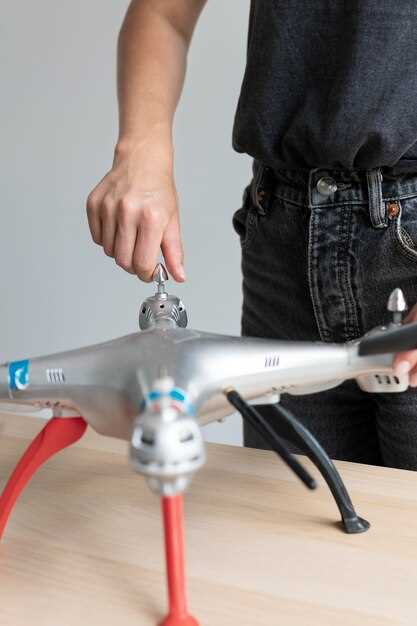
Upgrading your vehicle’s performance often involves a series of modifications aimed at enhancing power output and responsiveness. One popular modification among car enthusiasts is the installation of a lightweight flywheel. This component plays a crucial role in the engine’s operation, and switching to a lighter version can provide significant benefits.
The primary purpose of a flywheel is to store energy and maintain engine momentum, balancing the power produced during the combustion cycle. A lightweight flywheel reduces the mass and inertia, allowing the engine to rev more quickly and respond more effectively to throttle input. As a result, drivers often experience improved acceleration and a more engaging driving experience.
Before diving into the installation process, it is essential to understand the implications of this upgrade. While a lightweight flywheel can enhance performance, it may also affect driving characteristics, particularly at low RPMs. This guide will take you through the considerations, benefits, and steps involved in upgrading to a lightweight flywheel, ensuring that you make an informed decision for your vehicle.
Understanding the Benefits of a Lightweight Flywheel for Your Specific Vehicle Model

Upgrading to a lightweight flywheel can yield significant performance benefits, but the advantages can vary based on the specifics of your vehicle model. A lightweight flywheel is generally designed to reduce rotational mass, allowing the engine to rev more freely and respond faster to throttle inputs.
One of the primary benefits is improved acceleration. In vehicles like sports cars or performance-oriented models, a lighter flywheel enables quicker engine spin-up, leading to snappier throttle response. This results in noticeable performance gains during rapid acceleration and can enhance the overall driving experience.
For track-focused vehicles, the benefits are even more pronounced. Reduced rotational inertia allows drivers to optimize gear shifts and cornering speeds, thereby improving lap times. The quicker engine responsiveness is critical in maintaining momentum during high-performance driving scenarios.
On the other hand, in daily drivers or luxury vehicles, the benefits might not be as apparent. While you may still experience enhanced throttle response, the trade-off could be a reduction in low-end torque, potentially making the vehicle less smooth in everyday driving conditions. In such cases, selecting a lightweight flywheel that is compatible with your specific model is key to maximizing benefits without sacrificing drivability.
Compatibility plays a critical role in determining the advantages of a lightweight flywheel. Certain vehicles may require specific flywheel designs that consider factors such as engine weight, torque characteristics, and intended usage. Conduct thorough research or consult with a performance specialist to ensure the chosen flywheel complements your vehicle’s dynamics.
Ultimately, understanding the unique characteristics of your vehicle model will allow you to fully leverage the benefits of a lightweight flywheel, ensuring that you achieve the desired performance upgrades without compromising other essential aspects of driving experience.
Step-by-Step Installation Process for a Lightweight Flywheel
Installing a lightweight flywheel can significantly enhance your vehicle’s performance by improving acceleration and engine response. Follow these steps to ensure a successful installation.
1. Gather Necessary Tools and Parts: Before starting the installation, collect the required tools: a socket set, torque wrench, flywheel holding tool, and a jack. Additionally, you will need a lightweight flywheel, new flywheel bolts, and possibly a new clutch kit, depending on your vehicle’s specifications.
2. Prepare Your Workspace: Choose a clean, well-lit area to work. Make sure your vehicle is parked on a flat surface, and secure it with wheel chocks to prevent movement. Engage the parking brake for added safety.
3. Disconnect the Battery: Begin by disconnecting the negative terminal of the battery to prevent any electrical shorts or accidental starts while working on the vehicle.
4. Remove the Transmission: To access the flywheel, you must remove the transmission. Start by detaching any components obstructing the transmission, such as the exhaust system, driveshaft, and starter. Support the transmission with a jack, then unbolt it from the engine and gently slide it away.
5. Remove the Old Flywheel: With the transmission removed, you can access the old flywheel. Use the flywheel holding tool to prevent it from rotating, then unscrew the flywheel bolts. Carefully remove the old flywheel from the engine’s crankshaft, ensuring you do not damage any surrounding components.
6. Clean the Mounting Surface: Before installing the new lightweight flywheel, clean the mounting surface on the crankshaft. Remove any debris, oil, or remnants from the old flywheel to ensure a smooth fit and proper seal.
7. Install the Lightweight Flywheel: Position the new lightweight flywheel onto the crankshaft, aligning it with the dowel pins. Hand-tighten the flywheel bolts in a star pattern to evenly distribute the tension. Consult the vehicle’s manual for the recommended torque specifications and use a torque wrench to secure the bolts to the appropriate settings.
8. Reassemble the Transmission: Reinstall the transmission by aligning it with the engine. Secure all components by reversing the removal process. Ensure that all bolts and connections are tightened according to manufacturer specifications.
9. Reconnect the Battery: Once everything is reassembled, reconnect the negative terminal of the battery. Double-check all connections to ensure everything is correctly installed.
10. Test Drive: Before taking your vehicle out on the road, perform a thorough inspection of the installation. Start the engine and listen for any unusual sounds. Once satisfied with the installation, take your vehicle for a test drive to experience the improved performance and make sure everything is functioning correctly.
By following these steps carefully, you can successfully install a lightweight flywheel and enhance your vehicle’s performance efficiently.
Tuning Your Vehicle After Installing a Lightweight Flywheel: What You Need to Know

After installing a lightweight flywheel, it is crucial to adjust your vehicle’s tuning to maximize performance gains. A lightweight flywheel reduces rotational mass, allowing your engine to rev faster; however, it can also affect engine behavior and performance dynamics.
1. Engine Management System Adjustment
One of the first steps in tuning after the flywheel upgrade is to recalibrate your engine management system (EMS). Depending on the vehicle, this may involve reprogramming the ECU or using a performance chip. Ensure that the air-fuel ratio is optimized for the new flywheel setup to prevent potential engine knocking or poor throttle response.
2. Throttle Response Calibration
When you install a lightweight flywheel, the change in inertia can lead to a more sensitive throttle response. It may be beneficial to recalibrate your throttle position sensor to ensure smooth acceleration and deceleration. This can enhance driving enjoyment by providing quicker throttle reaction.
3. Clutch Engagement Point
Installing a lightweight flywheel alters the dynamics of clutch engagement. You may need to adjust the clutch pedal engagement point to accommodate the reduced inertia. This ensures optimal performance during gear shifts and prevents stalling, especially in low-speed scenarios.
4. Rev Limiter Adjustment
With a lighter flywheel, your engine can reach higher RPMs more rapidly. It’s crucial to check and possibly adjust the rev limiter to prevent the engine from reaching destructive levels. This adjustment helps maintain engine reliability while still benefiting from enhanced power delivery.
5. Performance Tuning Software
Utilizing performance tuning software can help you analyze and adjust various parameters, such as ignition timing and fuel map, to better suit the characteristics of a lightweight flywheel. Fine-tuning these aspects will enhance overall performance, ensuring that the increased engine responsiveness translates to real-world driving improvements.
6. Consider Engine Load
With the decrease in weight from the flywheel, engine load characteristics change. Pay attention to how your vehicle responds under various loads. You may need to adjust the tuning to compensate for decreased inertia, particularly if you frequently drive in situations that require sudden acceleration or deceleration.
In summary, proper tuning after the installation of a lightweight flywheel can significantly enhance your vehicle’s performance. By focusing on ECU adjustments, throttle response, clutch engagement, rev limiter settings, and performance software, you can ensure that you harness the full potential of your upgraded components.


